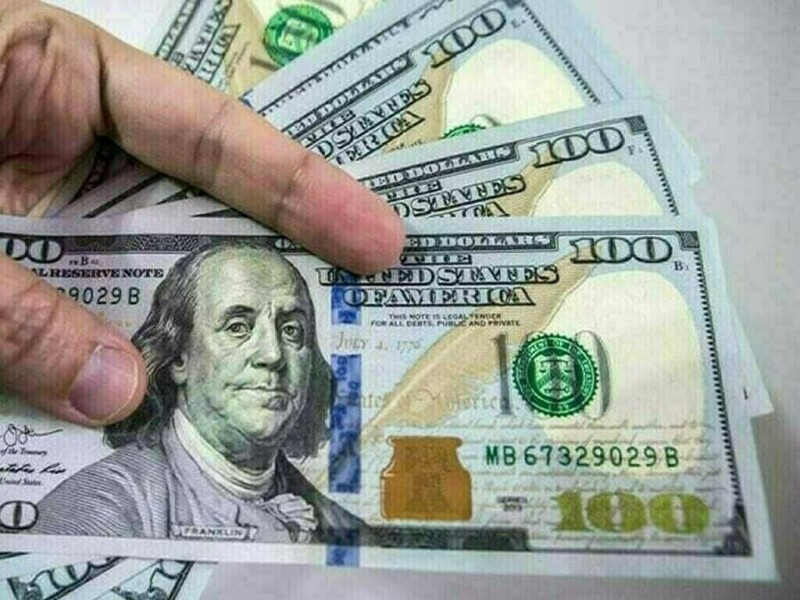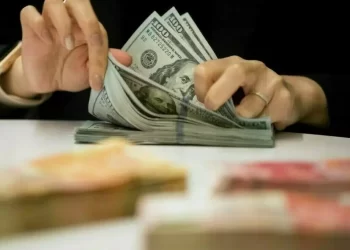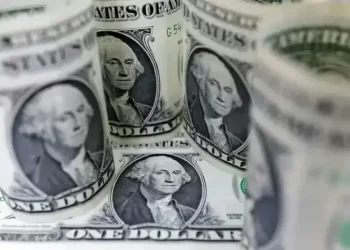
TOKYO: The US dollar stuck close to a 13-month high on Friday as investors assessed the outlook for the Federal Reserve’s interest rate path and uncertainty in Europe kept the euro on the back foot, while bitcoin eyed the $100,000 level.
The yen, meanwhile, held its ground against the greenback after domestic core inflation figures remained above the Bank of Japan’s (BOJ) 2% target in a sign conditions for further interest rate hikes were falling in place.
The dollar index edged down 0.05% to 107.01, not far off Thursday’s one-year high of 107.15, its highest level since Oct. 4, 2023, with little data this week to dent its march higher.
Data overnight showed US weekly initial jobless claims unexpectedly dropped to a seven-month low but also indicated some slack as it is taking longer for the unemployed to find new jobs, giving the Fed cushion to cut rates again in December.
Global PMIs are due later in the day, although those figures should not “change the dial too much,” said Tony Sycamore, market analyst at IG.
“It’s just trying now to find what the catalysts are (and) it’s obviously going to be does the Fed cut or not again” in December, Sycamore said. US PCE for October scheduled for release next Friday will be the focus.
The dollar has rallied around 3% so far this month on expectations that US President-elect Donald Trump’s policies could reignite inflation and limit the Fed’s ability to cut rates.
Dollar pulls ahead as markets focus on Trump policies, Fed outlook
Recent comments from Fed officials, including Chair Jerome Powell, have indicated the central bank may take a slower course in its rate cut path.
Expectations for the path of rate cuts have been scaled back recently, but remain somewhat volatile.
Markets are pricing in a 57.8% chance of a 25-basis-point cut at the Fed’s December meeting, down from 72.2% a week ago, according to CME’s FedWatch Tool.
Among Trump policies on weighing on investors’ minds were the president-elect’s campaign pledges of tariffs, with Europe and China both likely in the firing line.
But factors such as the scale and sequencing of the incoming president’s policies remain an unknown, and likely will not come to light until after Trump is inaugurated in January.
The euro, which makes up a hefty portion of the dollar index, steadied at $1.0475 after falling to a 13-month low of $1.0461 on Thursday.
The euro has been one of the main casualties of the dollar’s post-election ascent.
Recent escalations between Russia and Ukraine and political uncertainty as Germany, the bloc’s biggest economy, have further weighed.
Sterling traded at $1.25915, up 0.03% so far on the day. Bitcoin had the $100,000 mark in its line of sight, holding flat at $98,080.92 after reaching a record high of $99,057 on Thursday.
The cryptocurrency has surged more than 40% since the US election on expectations Trump will loosen the regulatory environment for cryptocurrencies.
The Japanese yen, which had been pushed back below 156 per dollar last week, received a boost as Japan’s core inflation in October held above the central bank’s 2% target to come in 2.3% higher from a year earlier, data showed on Friday.
“The renewed strengthening of underlying inflation coupled with the recent rebound in consumer spending and the renewed weakening of the yen strengthen the case for another BOJ rate hike next month,” Marcel Thieliant, head of Asia-Pacific at Capital Economics, wrote in a research note.
The dollar was last down 0.17% on the day at 154.27 yen.
BOJ Governor Kazuo Ueda on Thursday said that the bank will scrutinise data ahead its rate review next month, and “seriously” take into account the impact yen moves could have on the economic and price outlook.

TOKYO: The US dollar stuck close to a 13-month high on Friday as investors assessed the outlook for the Federal Reserve’s interest rate path and uncertainty in Europe kept the euro on the back foot, while bitcoin eyed the $100,000 level.
The yen, meanwhile, held its ground against the greenback after domestic core inflation figures remained above the Bank of Japan’s (BOJ) 2% target in a sign conditions for further interest rate hikes were falling in place.
The dollar index edged down 0.05% to 107.01, not far off Thursday’s one-year high of 107.15, its highest level since Oct. 4, 2023, with little data this week to dent its march higher.
Data overnight showed US weekly initial jobless claims unexpectedly dropped to a seven-month low but also indicated some slack as it is taking longer for the unemployed to find new jobs, giving the Fed cushion to cut rates again in December.
Global PMIs are due later in the day, although those figures should not “change the dial too much,” said Tony Sycamore, market analyst at IG.
“It’s just trying now to find what the catalysts are (and) it’s obviously going to be does the Fed cut or not again” in December, Sycamore said. US PCE for October scheduled for release next Friday will be the focus.
The dollar has rallied around 3% so far this month on expectations that US President-elect Donald Trump’s policies could reignite inflation and limit the Fed’s ability to cut rates.
Dollar pulls ahead as markets focus on Trump policies, Fed outlook
Recent comments from Fed officials, including Chair Jerome Powell, have indicated the central bank may take a slower course in its rate cut path.
Expectations for the path of rate cuts have been scaled back recently, but remain somewhat volatile.
Markets are pricing in a 57.8% chance of a 25-basis-point cut at the Fed’s December meeting, down from 72.2% a week ago, according to CME’s FedWatch Tool.
Among Trump policies on weighing on investors’ minds were the president-elect’s campaign pledges of tariffs, with Europe and China both likely in the firing line.
But factors such as the scale and sequencing of the incoming president’s policies remain an unknown, and likely will not come to light until after Trump is inaugurated in January.
The euro, which makes up a hefty portion of the dollar index, steadied at $1.0475 after falling to a 13-month low of $1.0461 on Thursday.
The euro has been one of the main casualties of the dollar’s post-election ascent.
Recent escalations between Russia and Ukraine and political uncertainty as Germany, the bloc’s biggest economy, have further weighed.
Sterling traded at $1.25915, up 0.03% so far on the day. Bitcoin had the $100,000 mark in its line of sight, holding flat at $98,080.92 after reaching a record high of $99,057 on Thursday.
The cryptocurrency has surged more than 40% since the US election on expectations Trump will loosen the regulatory environment for cryptocurrencies.
The Japanese yen, which had been pushed back below 156 per dollar last week, received a boost as Japan’s core inflation in October held above the central bank’s 2% target to come in 2.3% higher from a year earlier, data showed on Friday.
“The renewed strengthening of underlying inflation coupled with the recent rebound in consumer spending and the renewed weakening of the yen strengthen the case for another BOJ rate hike next month,” Marcel Thieliant, head of Asia-Pacific at Capital Economics, wrote in a research note.
The dollar was last down 0.17% on the day at 154.27 yen.
BOJ Governor Kazuo Ueda on Thursday said that the bank will scrutinise data ahead its rate review next month, and “seriously” take into account the impact yen moves could have on the economic and price outlook.








